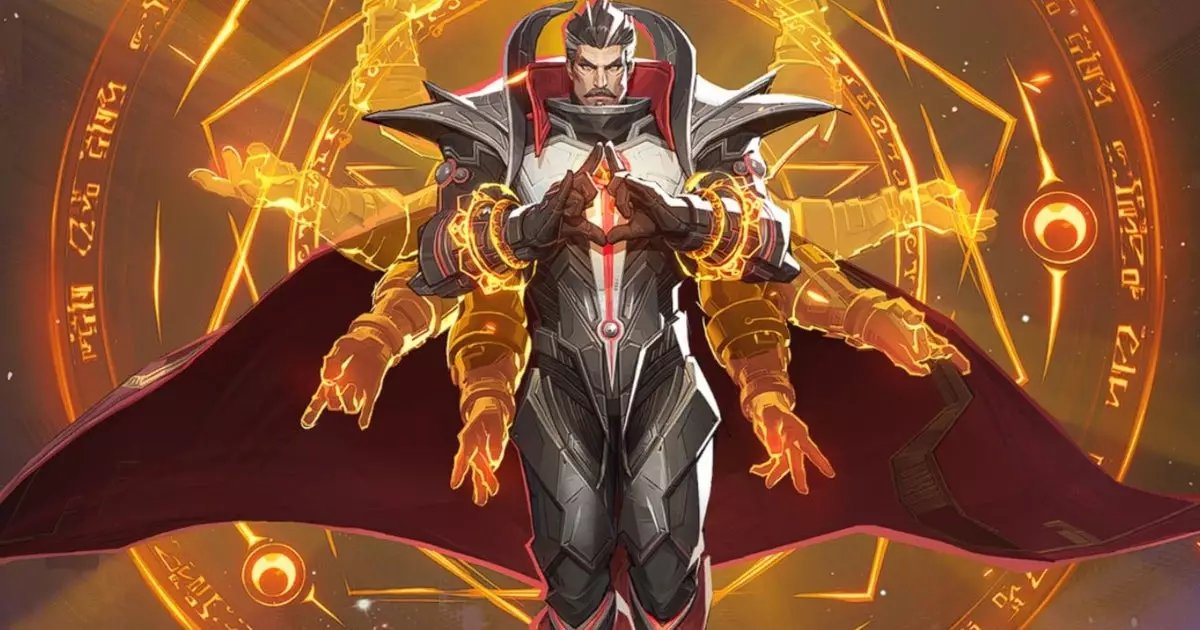The gaming landscape has seen a plethora of free-to-play titles gaining traction in recent years, but few have exploded onto the scene with as much enthusiasm as NetEase’s Marvel Rivals. Since its launch, the game has found itself squarely in the spotlight, ranking as the fourth most-played title on Steam. It’s crucial to dissect the factors contributing to this sudden rise in popularity, while also taking a critical lens to its gameplay mechanics and community reception.
One of the immediate draws of Marvel Rivals is its free-to-play model, a tactic that has proven exceedingly successful in capturing a wide audience. By eliminating the upfront cost barrier, the game welcomes players from all walks of life. However, this model comes with its own array of complexities. Microtransactions are woven into the fabric of the gameplay experience—while players can download the game for free, they are often encouraged to spend on in-game cosmetics, battle passes, or other enhancements. This raises questions about the sustainability of player engagement and whether the game can maintain its user base over time.
While this model has made Marvel Rivals accessible, it also leads to a heightened concern for player equity. Will those unwilling to spend money be left behind? The balancing act remains critical as the developers navigate player engagement in the long run.
Marvel Rivals has drawn clear comparisons to the influential Overwatch series, particularly with its third-person mechanics and team-based approach to gameplay. The combination of Marvel’s storied characters with a familiar framework is a strategic move, creating a sense of nostalgia and excitement. Characters like Venom and Doctor Strange are visually appealing, but they also offer an enticing fusion of lore and action that appeals to both die-hard fans and newcomers alike.
However, relying on existing franchises can be a double-edged sword. While the familiarity offers a comfort to players, it also invites scrutiny regarding innovation. As developers, NetEase must strive to ensure that Marvel Rivals is not merely an Overwatch clone with a branded skin but showcases unique gameplay elements or mechanics that differentiate it from its contemporaries.
One of the most intriguing aspects of Marvel Rivals is its focus on character abilities and balance. Following the initial release, players experienced a myriad of gameplay bugs—an expected hiccup in the launch of a new multiplayer title. The developers swiftly responded with a patch, addressing issues such as crosshair deviations and collision problems on maps.
A noteworthy feat of the recent update is the adjustment surrounding Doctor Strange’s portal ability, which was found to trigger terrain KOs erroneously, replenishing his ultimate capacity. This underscores the developers’ commitment to ensuring balanced gameplay, but it also highlights a significant challenge in real-time adjustments. Players have expressed frustration regarding certain imbalances, suggesting that ongoing tweaks are necessary to keep gameplay enjoyable and fair.
While the portal feature provides a dynamic twist in combat, it also risks overshadowing other characters. Balancing powerful abilities like these against others in the roster must remain an ongoing conversation, both among developers and the community.
Marvel Rivals faces a critical juncture as it continues evolving. Players are keenly observing the impact of patch updates on gameplay quality and balance. Will they be able to innovate while retaining the engaging elements that attracted players initially? As with many free-to-play models, sustaining player interest through innovative gameplay, compelling narratives, and rigorous balance adjustments will be essential.
As we look to the future, the success of Marvel Rivals will hinge not only on addressing balance issues but also on how well it continues to engage its community. The fervor surrounding Marvel’s brand coupled with a dedicated player base may help it thrive, but inherent challenges remain. The gaming community is watching closely, eager to see if Marvel Rivals can carve out its legacy in a landscape saturated with competitive multiplayer titles.


Leave a Reply